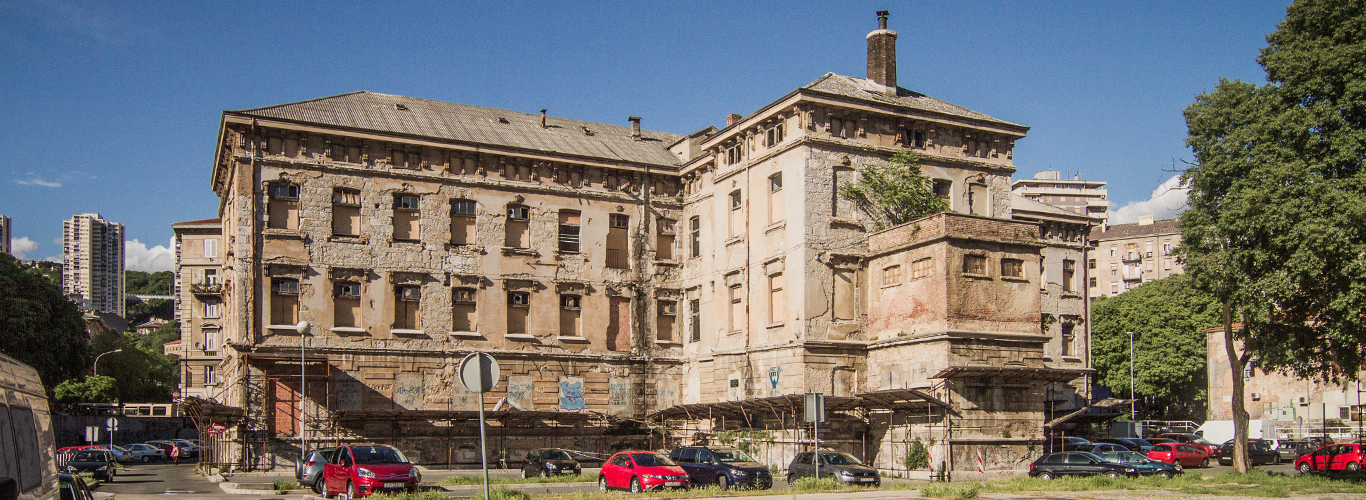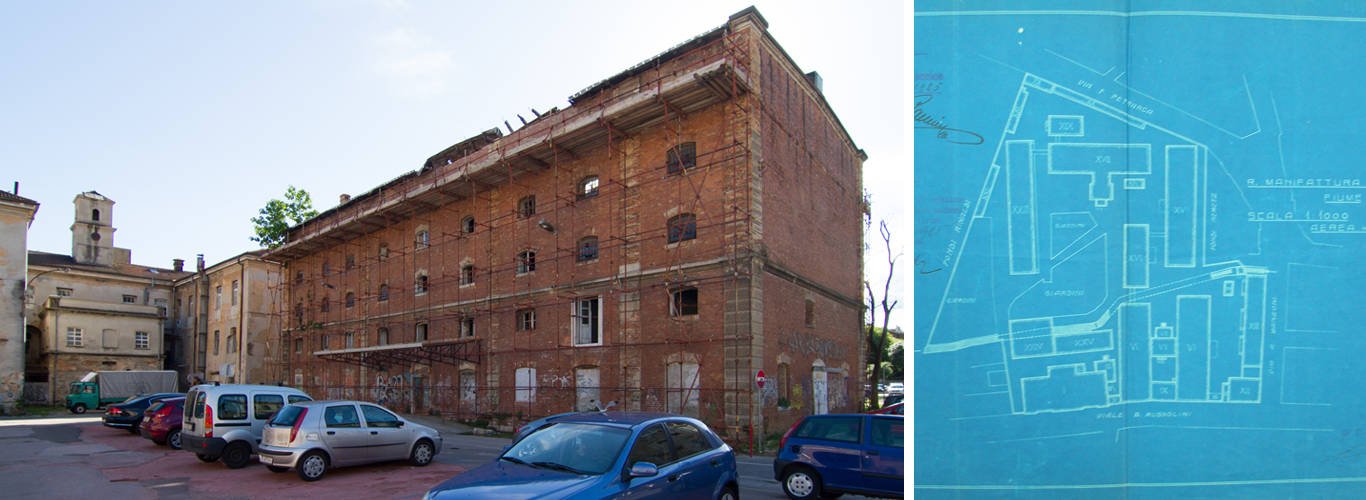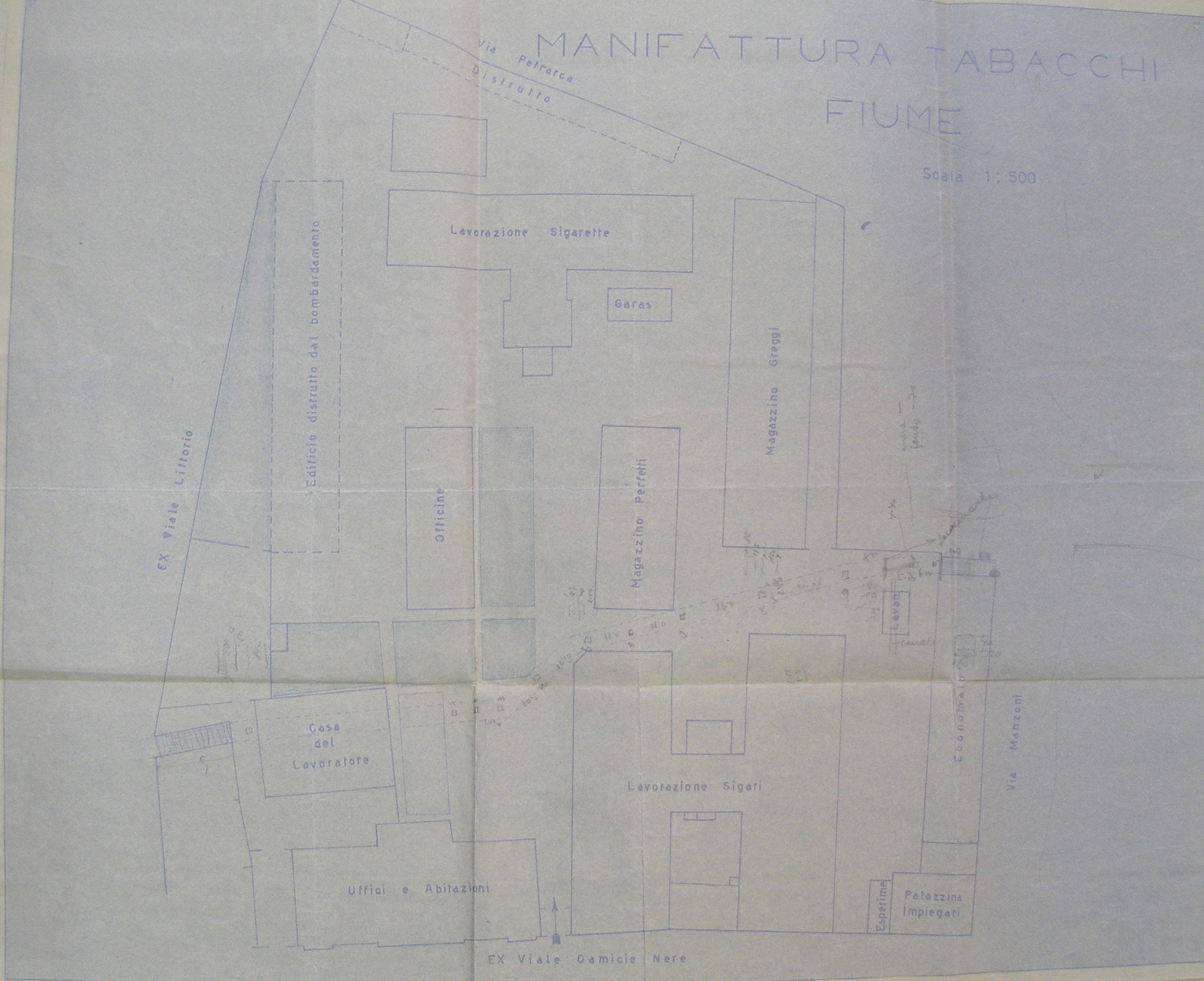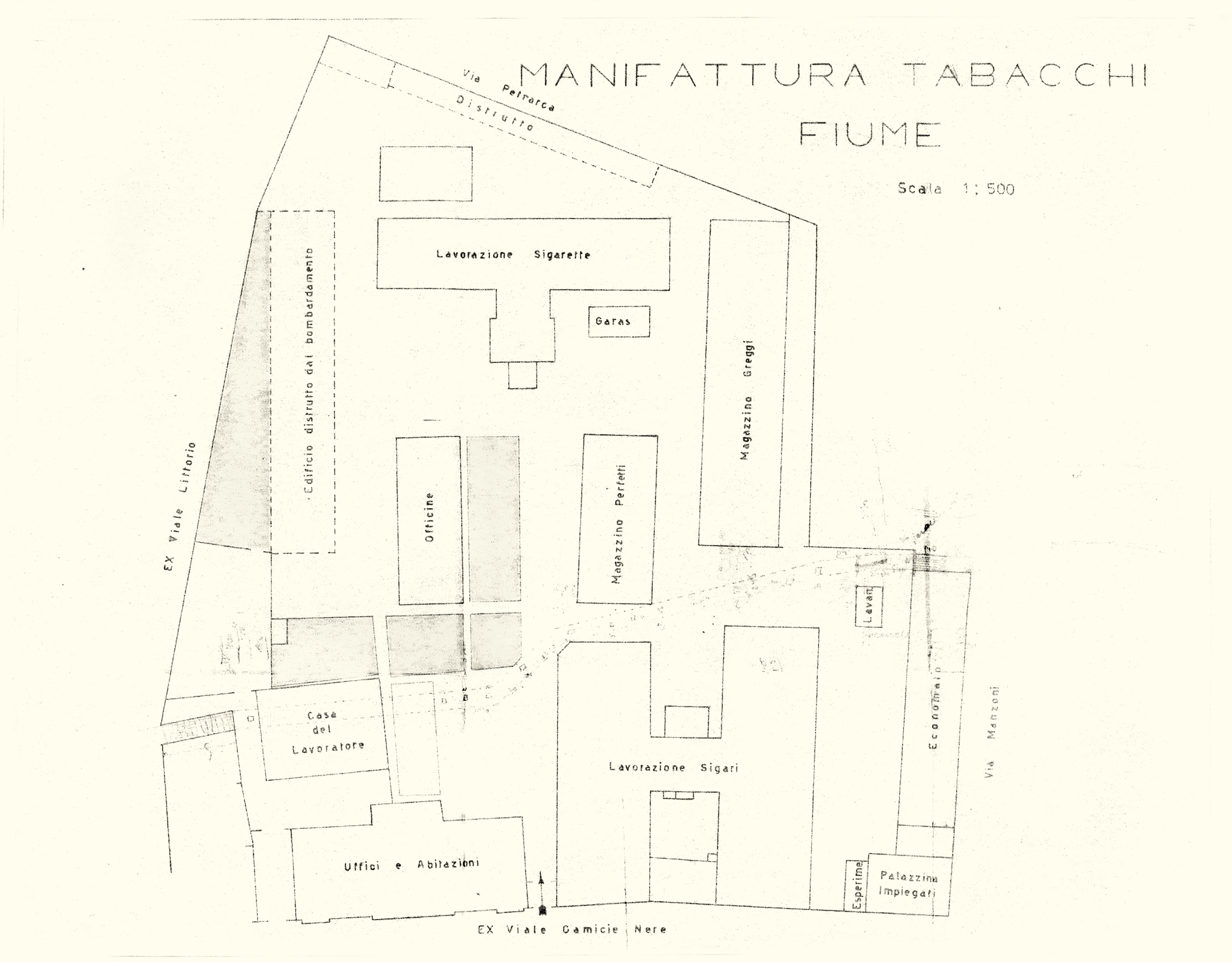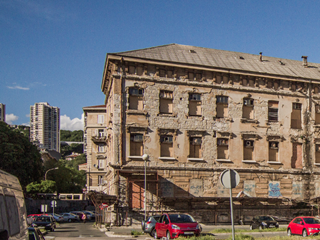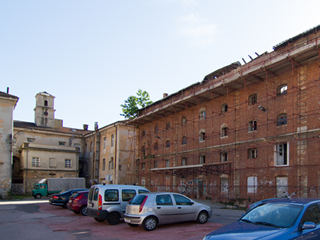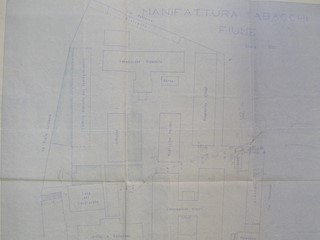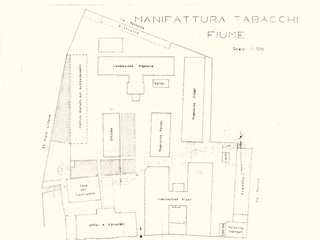H-complex, T-complex, The Tobacco Factory
address: Krešimir StreetPeriod: Historicism
Kind: Immovable material heritage
Century: 19
Year: 1851
Purpose: industrial
Crucial for the establishment of the Tobacco Factory in Rijeka was the imperial patent referring to the monopoly in the production of tobacco, issued on 20 November 1850. This patent became effective in Hungary, Transylvania, Croatia, Slavonia and the Military Krajina in March 1851. On 24 May 1851, the Hungarian government bought the buildings of the former Sugar Refinery for 100,000 gold ducats and started producing tobacco in the existing infrastructure of the collapsed Sugar Refinery. The first director of the company was Josip Dechler, followed by Franjo Skodnik. The plant did not undergo further changes until the late 1860s, when the complex was expanded by a historicist four-storey building called the T-object. In 1867, the production of the Virginia cigars started in this building.
The Tobacco Factory also used spaces of the former factory buildings of the Sugar Refinery, the so-called H-complex. The pavilions were interconnected with an annexed building forming the letter H.
The Tobacco Factory was renowned for the high number of workers it employed. In 1884, it had 2,600 workers, mostly women. The working conditions are reported to have been very well. The workers enjoyed a daily meal, physical health examinations, paid sick leave and various other benefits. The annual production of cigarettes was significant. In 1880, 150-170 million cigarettes were produced and, in 1890, the number was already at 250 million. After the First World War and the fall of the Monarchy, the factory continued to operate with a reduced production capacity. The mentioned working conditions drastically worsened and the number of workers’ strikes increased. In January 1925, the workers launched a strike and it was necessary to bring in the Army in order to break it. The factory closed its doors during World War II and the last director of the company was Augusto Vannini.
Several years after the closure of the factory, from 1945 to 1995, the complex housed the Rikard Benčić Factory of Engines and Tractors.
Valorization:The entire complex of the former Sugar Refinery, or Tobacco Factory, is under the protection of the Conservation Department. It is currently under restoration, and upon its completion, the complex should contain cultural institutions (library, the City of Rijeka Museum and the Museum of Modern and Contemporary Art).
Bibliography:
Dmitrović, Saša, Mala povijest duhana u Rijeci, Sušačka revija, godina V., br. 18/19, Klub Sušačana, Rijeka, 1997.
Klen, Danilo (ur.), Povijest Rijeke, Skupština općine Rijeka, ICR, Rijeka, 1988.

